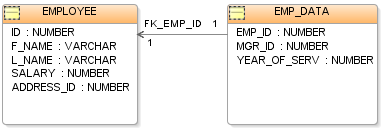8
2012
What is a Database Management System or DBMS?
The Database Management system or DBMS is also called a file or database manager that allows users to have access to a database. When a person uses a database manager system, he has the opportunity to understand where the necessary data are located. The Database Management System manages the user’s request to access a database and its data on other related programs.
All about Database Management Systems
A database system is a compilation of information in collaboration with a set of program in order to access the data. The primary objective of using this kind of system is to establish a convenient and efficient working environment.
A database management system is used to manage large files. In using the database system, you must understand that this system will aid in storing and manipulating important information. Moreover, this kind of system also contributes to the safety of your files against system crashes or unauthorized access. In certain circumstances where a person needs to share a data, the system will make sure that there will never be an incidence of file corruption.

The Special Features of Database Management Systems
The database management system has played its role in developing new tools to help businessmen and software developers in storing and manipulating important information. Today, the DBMS has special features that would allow users to effectively store, manipulate and share codes and procedures without any complexity.
Here are the special features of the DBMS:
- The ability to process queries. The term “querying” is the method of accessing information from different locations or programs. For instance, if a user wants to gather data on the status of his business, he can use the query language that will allow him to have access on the database, and in the same way; the database system analyzes the data and revise it in accordance with the user’s privileges.
- The ability to backup and replicate files. It is important to create a backup source of files in case there’s any equipment failure. The DBMS provides the amenities to extract and share the attributes set. The data is then copied to two database servers so that the information remains consistent in the system.
- The ability to establish rules on attributes. If a user wants his attributes or information to become reliable, then the DBMS will allow you to place a rule on your attributes. For instance, you only want each mobile phone network to only provide one particular unit model associated with them. If another user wants to change the facts, then the DBMS will deny the access. However, the DBMS also allows users to modify the rules on the attributes.
- The ability to secure the attributes. Often, users would only want to put a limit on who can see and manage their attributes. The DMBS allows users to place a security on their attributes so that only a number of reliable people may have access to the attributes.
- The ability to compute the attributes. Common computations like sorting and grouping are required for most attributes. That’s why users depend on the DBMS to help them on such calculations.
Further readings
Advertisements
Recent Posts
- What is a Disaster Recovery Data Center
- What is a Relational Database?
- What is a Flat File Database?
- What is a DSN or Database Source Name?
- What is a Disaster Recovery Plan?
- What is an Open Source Database?
- What is Disaster Recovery?
- What is a Database Cluster?
- What are Database Servers?
- What are Database Forms?
Random Posts
- What is a XML Database?
- What is Database Hosting?
- What is an Object Oriented Database?
- What is an Open Source Database?
- What is ETL or Extract, Transform, and Load?
- What is Database Design?
- What is Database Security?
- What are Database Forms?
- What is a Disaster Recovery Data Center
- What is High Availability?

 An article by
An article by 




